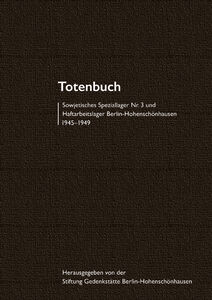Soviet Special Camp No. 3
In May 1945, the Soviets seized the site at Genslerstraße 66, where a canteen kitchen for the National Socialist People's Welfare Organisation (NSV) had been located since 1939. They set up a camp within the building complex and some barracks – the so-called Special Camp No. 3.
Under the control of the Moscow People's Commissariat of the Interior (NKVD), it primarily served as a transit camp for more than 16,000 men, women and adolescents. From here, transports were organised to the special camps in Ketschendorf, Weesow and Sachsenhausen.
At Special Camp No. 3, over 4,200 people were imprisoned in a space that was incredibly confined at times. Horrendous hygiene conditions, meagre food ratios and inadequate medical care dominated the living conditions at the camp. According to estimates, around 1,000 people died as a result. Their bodies were buried anonymously in mass graves on a rubble dump.
Most of the prisoners came to the camp on the basis of Soviet order 00315 dated 18 April 1945, according to which Nazi party members, members of the police and secret service, as well as administrative officials of the Nazi regime, but also so-called spies, saboteurs and terrorists were to be arrested. Adolescents aged twelve and over were also sent to the camp for alleged underground activities as members of organisation "Werewolf" (Nazi resistance forces). Denunciations often led to imprisonment. From 1946 onwards, more and more opponents of the Soviet occupying power were sent to Hohenschönhausen. The special camp was dissolved in November 1946 and the prisoners were transferred to other camps.
The central administration office of the special camps in Germany was also located at Genslerstraße. According to – incomplete – official figures, more than 122,000 people were imprisoned in the ten camps, more than a third of whom died in custody. Most prisoners were held for years without trial. The last three special camps, Bautzen, Buchenwald and Sachsenhausen, were not dissolved until early 1950.
Book of the Dead

Gedenkstätte Berlin-Hohenschönhausen (Hg.), Totenbuch. Sowjetisches Speziallager Nr. 3 und Haftarbeitslager Berlin-Hohenschönhausen 1945-1949, Berlin 2014.
Publication

Peter Erler, Polizeimajor Karl Heinrich: NS-Gegner und Antikommunist. Eine biographische Skizze, Berlin 2007.
Fates of imprisonment
The fates of the people imprisoned in the special camp are many and varied. You can read some of their biographies in our media centre.


